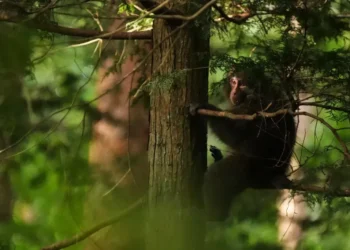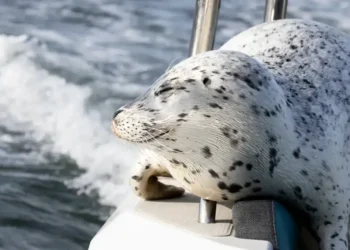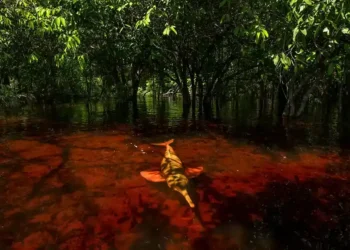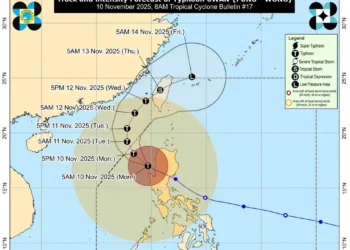Silent Distress Call from Ningaloo Reef: An Urgent Look at Coral Bleaching and Its Threat to Australia’s Natural Wonder
On the remote coastline of Western Australia, American tourists Emily Wapman and Evan Risucci found themselves drifting over the stunning waters of Turquoise Bay. It’s a special kind of snorkeling experience called “drift snorkeling,” where the current carries you effortlessly over Ningaloo Reef, one of the longest and most pristine near-shore reefs in the world. But as the pair floated above the coral, they couldn’t ignore the reality beneath them. The vibrant, colorful coral they had expected to see was replaced with stark white skeletons — a clear sign of coral bleaching, a phenomenon caused by the stress of rising ocean temperatures.
Wapman, a recent graduate in biological sciences, was struck by the sight of the bleached coral. “You hear about it in school, but seeing the scale of it was a real eye-opener,” she said. Risucci, a filmmaker who admitted to knowing little about coral reefs, was similarly shocked. He had assumed the white coral was alive. “Someone from the United States might come here and think, ‘wow, this is so pretty,’ but be completely oblivious to the fact that it’s all dead.”
But, as researchers like molecular ecologist Kate Quigley are quick to clarify, not all is lost. Ningaloo Reef is not dead — it’s simply sick.
A Reef Under Siege: The Impact of Climate Change
The Ningaloo Reef, like so many others around the world, is suffering from a severe marine heatwave. Oceans have absorbed 90% of the excess heat caused by global warming, and every year for the past eight years, ocean temperatures have set new records. Coral reefs, which are incredibly sensitive to temperature changes, are bearing the brunt of this warming. This year, mass bleaching spread across at least 82 countries and territories, impacting 84% of the world’s reefs.
Ningaloo had remained largely untouched by this phenomenon until now. A combination of unusually high ocean temperatures and the hottest March on record in Western Australia finally pushed the reef past its limit. Even the ancient, massive Porites corals, which had previously withstood heatwaves, are starting to show signs of distress. These centuries-old coral boulders, once thriving with life, are expelling their vibrant algae, leaving behind a ghostly white hue, with green algae slowly overtaking their surfaces — the telltale sign of death.
Dr. Kate Quigley, a principal research scientist with the Minderoo Foundation, says it was only a matter of time before the heat reached this far. “It’s no surprise that bleaching has finally reached Ningaloo,” she said. “Coral reefs are under increasing pressure from climate change.”
Scientific Efforts to Save the Reef
At the Minderoo Exmouth Research Lab, Quigley and her team are working tirelessly to develop more heat-resistant coral through selective breeding. By combining corals from warmer waters with those from colder regions, scientists are hoping to create offspring that can better withstand future marine heatwaves.
Zac Saber, lab manager at the facility, explains, “Our ability to regulate environmental factors within the lab allows us to simulate the effects of climate change on coral reefs, helping us predict how these ecosystems will respond in the future.”
Initial findings have shown promise. Baby corals bred from heat-tolerant parents are showing significantly more resilience to temperature extremes. “We found that offspring of mixed parentage — a heat-tolerant mother and a less heat-tolerant father — can double the heat tolerance of the coral,” Quigley says. “In some cases, the babies are even more heat-resistant than the mother.”
Bleaching Crisis: A Nation’s Wake-Up Call
The bleaching crisis in Australia is not limited to Ningaloo. In March 2024, both the Great Barrier Reef on the east coast and Ningaloo on the west bleached simultaneously for the first time in history, sending a stark message to all Australians.
Andrew Forrest, a billionaire philanthropist and founder of the Minderoo Foundation, put it bluntly: “When you see both reefs in crisis, it’s a clear sign that what we were warned about has come true.” For Forrest, the solution lies in accelerating the transition to renewable energy. “If we destroy the oceans, we destroy our economy,” he says. “Investing in clean energy is not just good for the environment — it’s also smart business.”
But despite these warnings, new fossil fuel projects continue to be proposed, including the controversial Burrup Hub gas project near Ningaloo. Conservationists are sounding the alarm about the environmental dangers of expanding fossil fuel extraction in a region already suffering from climate change.
A Fragile Ecosystem Facing Extinction
Ningaloo Reef has long been a beacon for tourists, especially those visiting Exmouth to swim with the famous whale sharks. Every year, the region attracts thousands of visitors who come to experience the reef’s incredible biodiversity — from humpback whales to manta rays and green turtles.
However, the very fossil fuel extraction that has fueled Australia’s economic growth is also a major contributor to the reef’s destruction. The state of Western Australia, rich in fossil fuels, continues to push forward with new projects that further threaten the environment. As Australia’s government grapples with how to balance economic growth and environmental responsibility, scientists warn that it’s a race against time.
The United Nations has emphasized the urgent need to limit global temperature rise to 1.5°C in order to save coral reefs, but the damage is already evident. Bill Hare, CEO of Climate Analytics, a non-profit science and policy institute, says that the continuation of fossil fuel projects undermines any progress made in climate action. “Coral reefs probably won’t survive much above 1.5°C of global warming,” he warns.
Hope Amidst the Decline: The Power of Regeneration
Despite the bleak outlook, there is still hope. Every year, Ningaloo Reef undergoes a mass spawning event, where coral releases eggs and sperm, creating the potential for regeneration. When CNN visited the reef in April 2024, scientists were relieved to witness the spawning — a sign that life still persists, even in the face of extreme stress.
Kate Quigley remains cautiously optimistic: “While the reef is under threat, the ability to regenerate is still there. This is an ecosystem under pressure, but we haven’t lost it yet. The next generation of corals can still be born, and that gives us hope.”
The Need for Action
Ningaloo Reef may still have a fighting chance, but time is running out. Scientists and environmentalists agree that coral restoration efforts, though valuable, cannot replace the urgent need to tackle climate change head-on. Without significant cuts to carbon emissions, the world’s coral reefs are unlikely to survive the coming decades.
As tourists like Wapman and Risucci experience the beauty and fragility of Ningaloo Reef firsthand, the reef continues to send a silent distress call — one that must not be ignored. The message is clear: protect our oceans, or risk losing the treasures they hold forever.
This article was rewritten by JournosNews.com based on verified reporting from trusted sources. The content has been independently reviewed, fact-checked, and edited for accuracy, neutrality, tone, and global readability in accordance with Google News and AdSense standards.
All opinions, quotes, or statements from contributors, experts, or sourced organizations do not necessarily reflect the views of JournosNews.com. JournosNews.com maintains full editorial independence from any external funders, sponsors, or organizations.
Stay informed with JournosNews.com — your trusted source for verified global reporting and in-depth analysis. Follow us on Google News, BlueSky, and X for real-time updates.













